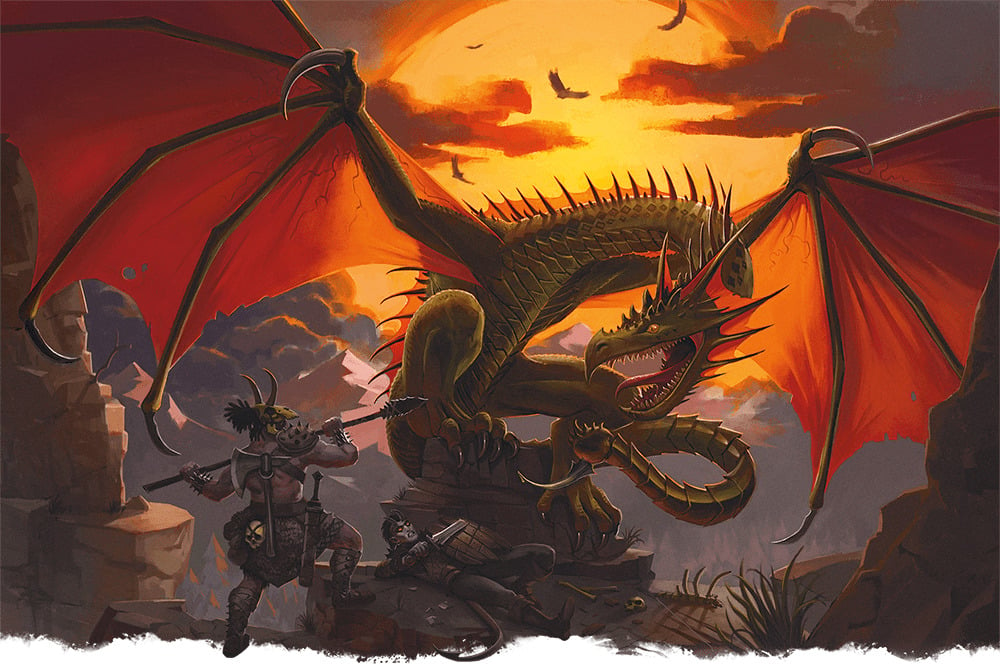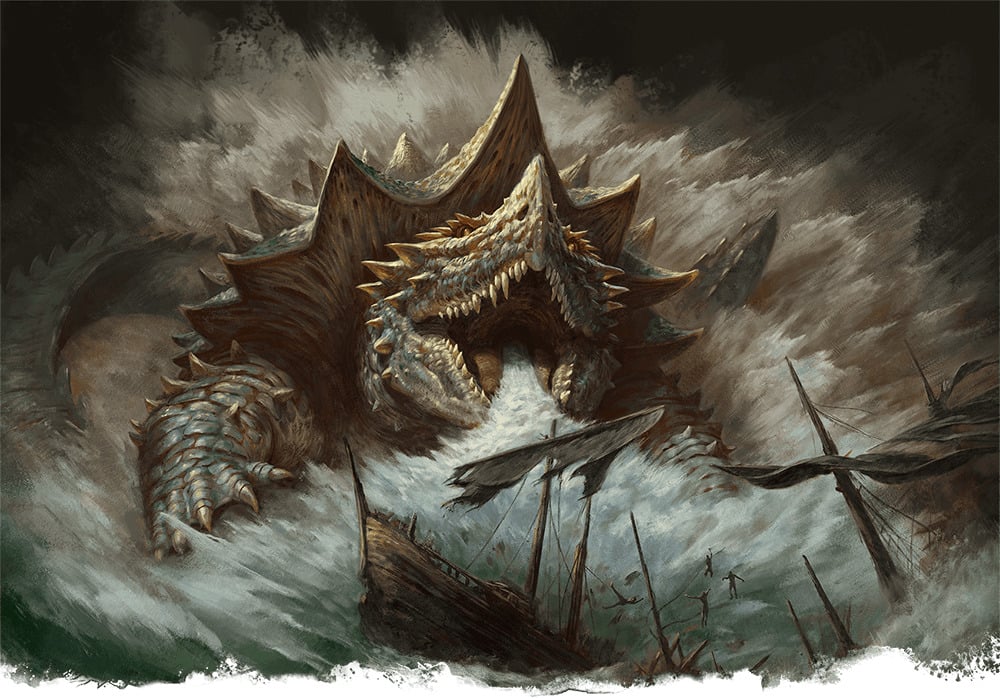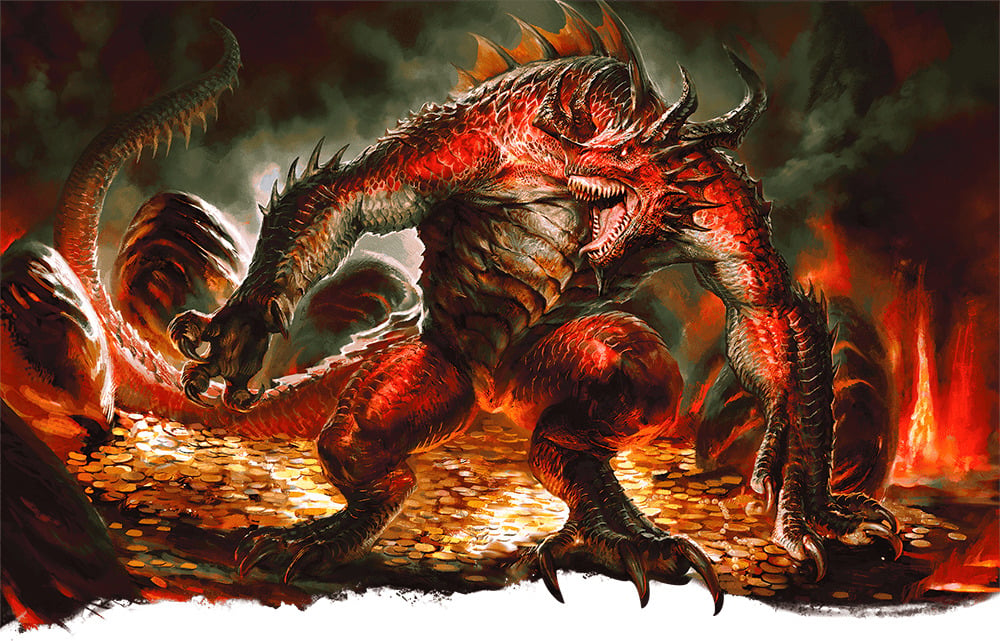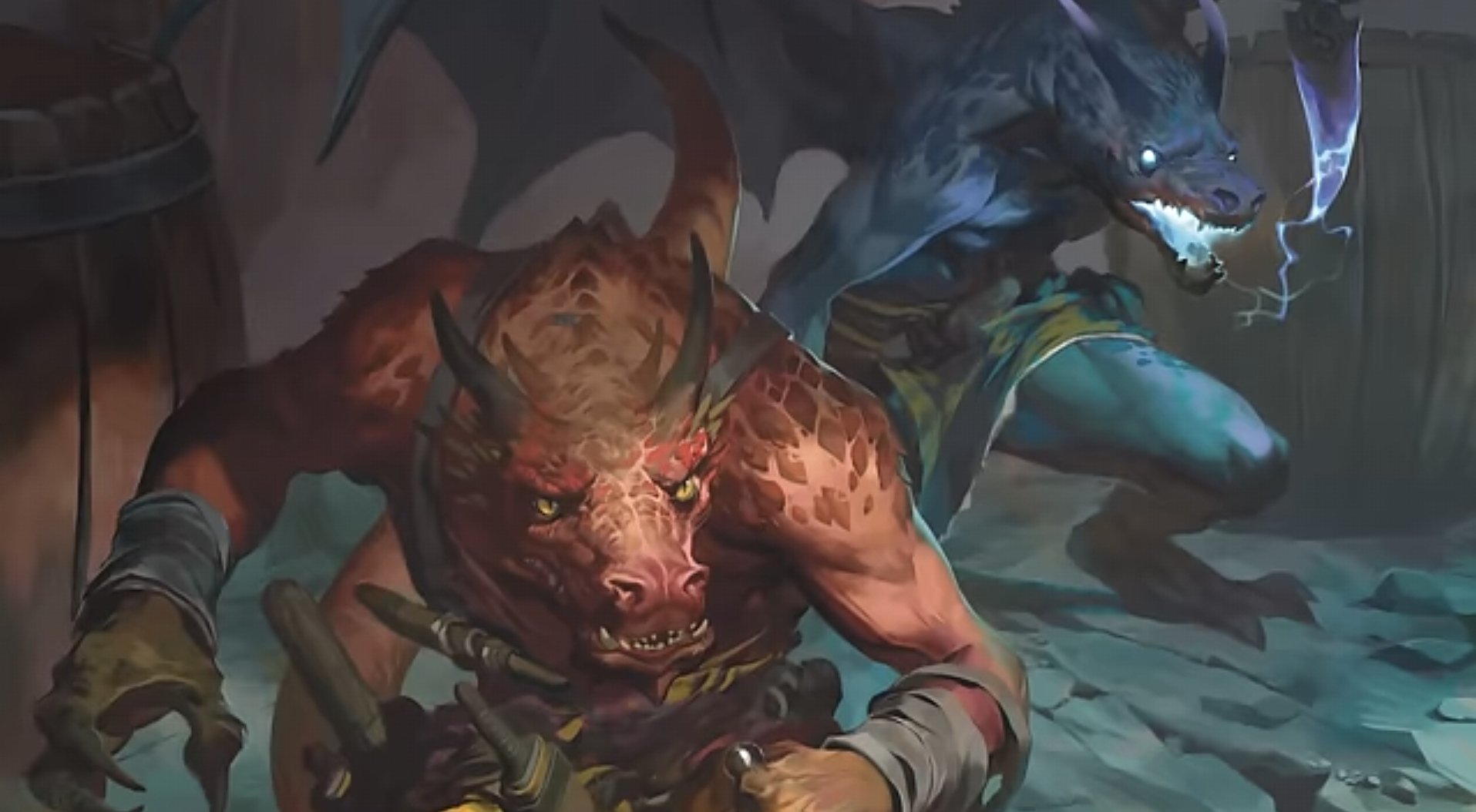The Dragon family of creatures grew with the 5.5E Monster Manual. And these five dragons are proof enough for anyone!
Dragons are an iconic part of D&D. They have wings, breath fire (or ice or lightning or whatever), and have shimmering, beautiful color coded scales that tell you whether they’re good or evil, and what kind of elemental energies they command. And in this case, acid is an element, even though you could hardly describe acid as a basic building block.
But that’s only true of some of the dragons in D&D. The dragon family has expanded a fair amount in the 5.5E Monster Manual. With that in mind, here’s a look at five dragons that don’t fit the pattern of D&D’s big ten.
Faerie Dragon

Faerie Dragons are basically what the name implies. They are “cat-sized pranksters” with draconic feautres and butterfly wings. But don’t let the faerie fool you. These are dragons through and through. Any dragon-specific spells or magic items will hit them just as hard as if they were a Red Dragon Greatwyrm. Harder, in fact, because they aren’t.
But I’d hold off on that, if I were you. Faerie dragons, if you can endure their pranks and perhaps even help them right wrongs that they’ve seen in the world, are incredible friends to have. These dragons can cast spells and become invisible as a Bonus Action (and stay invisible until they decide they don’t want to be, since it’s Greater Invisibility). But more than that, they have “Euphoria Breath.” So you know, you can just get a friendly faerie dragon to hotbox your party until you’re all floating in a haze of “euphoria breath”.
Wyvern

Wyverns are much more draconic. They have are opportunistic predators, known for their deadly strafing attacks, which they make with their long, venomous tails. Once they wear a creature down with fly-by attacks, keeping them at a 10-foot reach while airborne (most often eschewing their bite in favor of the safety of a reach attack), a pack will surround a prey, finish it off and then carry it to the pack’s lair where the creature can be eaten in safety.
Wyverns are a great dragon type, because they hunt in packs and swarm around like cliff racers. But they also won’t overwhelm you with five or six breath weapons all at once. You could even include a pack of wyverns with a chromatic or metallic dragon and it would make for an interesting fight, instead of an immediate TPK.
Dragon Turtle

Dragon Turtles are one of a handful of gargantuan sea monsters that DMs are chomping at the bit to get to use. They are very draconic in that they want treasure from passing ships, and may be given to wrath if provoked or ignored. And they are also very big.
But they don’t fly. They do, however exhale clouds of superheated steam that can deal fire damage, even underwater. In fact being underwater explicitly doesn’t protect you from this fire damage – so a dragon turtle could theoretically burn your ship from the hull up, which feels especially draconic.
Half-Dragon

Half Dragons have a whole new identity in D&D 5.5E. No longer just a weird sort of pseudo template that you can put onto an existing stat block, they are creatures in their own right. They are “magical warriors created by dragons.” They are created by dragons through magical rituals (and sometimes accidents) to help them accomplish various ends:
Born through magical rites involving the essences of dragons, half-dragons serve their creators and their own draconic whims. Most half-dragons are created by chromatic dragons who desire servants with some trace of their own might and grandeur. Half-dragons frequently command other servants of a villainous dragon or act as agents in lands where their draconic master would attract unwanted attention.
And they make excellent magical muscle. A single half dragon weighs in at CR 5, making them a perfect villlain to threaten a low level party (probably around level 3 a party of four could take one down with some difficulty, but not many causalties). Though you could always beef one up if you want them to be deadlier.
Kobolds

At long last, one of D&D’s best collections of weird little guys, kobolds. Kobolds are finally dragons. Long have they served them. Long have they worshipped them. Aspired to be them. And now, at last, in 5.5E, kobolds are dragons. Technically.
They are otherwise completely unchanged. They still live short, petty, spiteful lives. But they can do so knowing that deep down they’re majestic dragons, taxnomically. And isn’t that what life is all about?
Happy adventuring!
Don’t Miss:
Read more at this site
